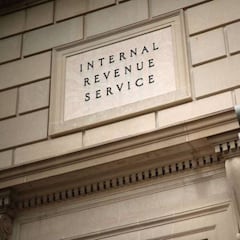IRS codes explained for tax returns 3-digit numbers and what they mean
What you need to know about the 3-digit number that appears on your tax return...


As tax season in the United States begins, we looked at some of the most common questions when filing a return.
We will walk you through the IRS’ transaction codes, which the Taxpayer Advocate explains “provide processing instructions to the IRS’s system.” These codes appear on a taxpayer’s transcript, which can be requested from the IRS.
There are over a dozen transaction codes (TRs) that can appear on a transcript. The complete list and description can be found in the guide published by the IRS, but here, we will look at those identified by the Taxpayer Advocate as the most common. A transcript can be handy if there have been corrections to your return or your refund was not issued for the correct amount. Requesting this information can allow you to understand better the IRS processes that led them to refund you a certain amount.
A look at the most common Transaction Codes
Starting from the top, TR 150 refers to the date the tax return was filed. TC-806 refers to the tax withholding indicated by a taxpayer’s W-2 or 1099.
If TR-846 appears on your return, it indicates to the IRS that there are no issues with the refund because the “credits and withholding exceed the amount of tax due.” Under this TR, the IRS will also report the value of the refund.
These are the most common codes to appear on a transcript.
This list was first published by the Taxpayer Advocate, a federal agency that works to increase transparency in the tax filing process:
- TC 196 – Interest Assessed;
- TC 276 – Failure to Pay Tax Penalty;
- TC 291 – Abatement Prior Tax Assessment;
- TC 300 – Additional Tax or Deficiency Assessment by Examination Division or Collection Division;
- TC 420 – Examination Indicator reflects that a return is under examination consideration though the return may or may not ultimately be audited;
- TC 428 – Examination or Appeals Case Transfer;
- TC 460 – Extension of Time for Filing;
- TC 480 – Offer in Compromise Pending;
- TC 494 – Notice of Deficiency;
- TC 520 – IRS Litigation Instituted;
- TC 530 – Indicates that an account is currently not collectible;
- TC 582 – Lien Indicator;
- TC 768 – Earned Income Credit;
However, there are dozens of codes, and to help taxpayers, the IRS published a document with each and a description.
Eligible taxpayers should take advantage of the Free File tool
The IRS has launched a public campaign to inform taxpayers about the availability of Free File, a tool that enables them to submit their tax returns without incurring the expense of commercial tax software that may reduce their refunds. If one’s annual gross income for 2023 was $79,000 or less, they can use this tool for free.
Related stories
To offer this free service, the IRS works with various partners and has put together a quick survey to match taxpayers with the partner that will best meet their needs. The complete list can be found here.
Are you looking to receive your tax refund as quickly as possible? If so, you can submit your tax return using one of the live tax filing portals, before the IRS begins processing. By submitting your return early, you can get ahead of the queue for processing, which means that you will be able to receive your refund more quickly. It’s also worth noting that as more and more people submit their tax returns, the wait time to receive a refund can increase as the IRS has to process an increased volume of returns.

